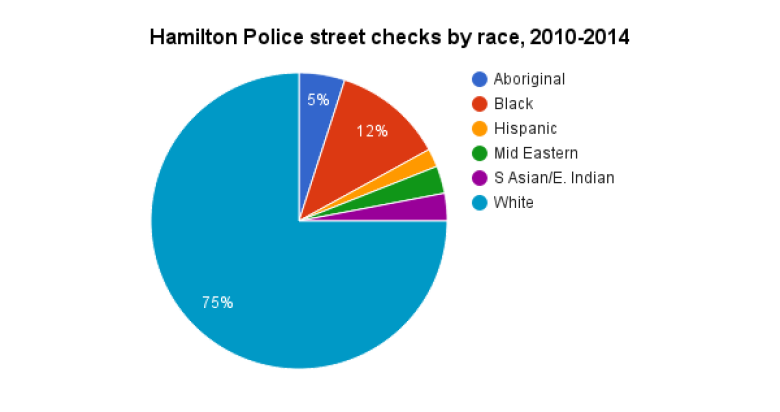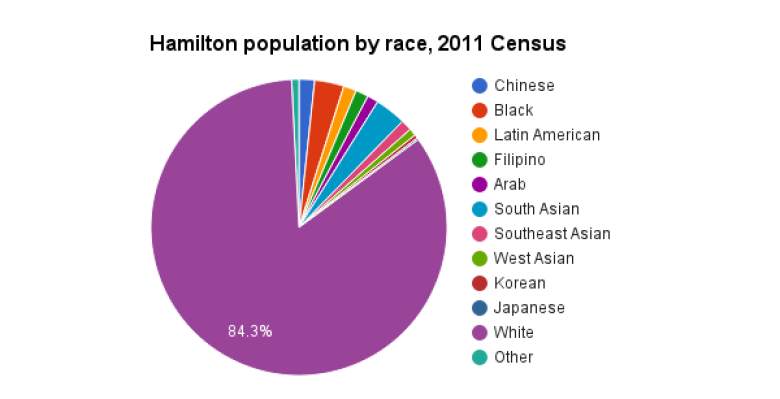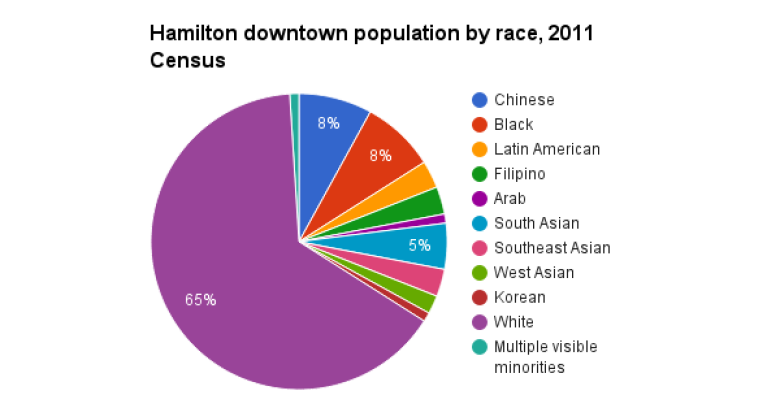Do Hamilton Police actually card black people disproportionately?
"It wouldn't make any sense for us to go to Waterdown and do street checks": Police union president

Hamilton Police say their ACTION Teams' focus on downtown with its larger population of visible minorities residents compared to the whole city is why the number of visible minorities in thecarding/street check numbers are so high.
Deputy Chief Eric Girt says that's the relevant comparisonin evaluatingwhether racial minorities are mistreated in their carding practice not comparing the numbers to the citywide population, which shows a disproportionate carding of visible minorities.
Alot of the people who are active in the downtown core aren't necessarily residents.- Scot Wortley, criminologist, University of Toronto
Butcritics of carding raise questions about using one neighbourhood's population figures to assess whetherracial bias plays into the stops.
The rate of black residents being street checked is still disproportionatein the downtown comparison, thoughnot as much.
And 25,000 people work downtown. Others go downtown from around the city and the region for entertainment and services. Critics ask how those numbers change the racial profile?How can police be sure the person they street check downtown is a downtown resident and not working or going out there?
"Alot of the people who are active in the downtown core aren't necessarily residents," said ScotWortley, a criminologist at the University of Toronto who has done race studies for police departments in Kingston and Ottawa. "It might be a little dubious to use census benchmarking in those areas because a lot of the people there aren't necessarily residents."
'It wouldn't make any sense for us to go to Waterdown'
Police also point out that businesses and politicians haveasked the police to pay special attention downtown.
Street checks are just one of the proactive policing tools the ACTION team uses to fulfil that mandate to bring crime down downtown, police argue.
"We asked, 'What does the community want?' And the community has spoken and said we want the downtown cleaned up," said ClintTwolan, president of the Hamilton Police Association. "It wouldn't make any sense for us to go to Waterdown and do street checks."
But in targeting a particular neighbourhoodfor its crime, police also target the people who live there, argues Toronto-based anti-carding advocate and journalist Desmond Cole, who was in Hamilton the day the police released the new numbers.
"All you're saying is that you're reinforcing systemic racism," he said. "Because (the argument is) we have to be in the neighbourhoods that are poor, where there's more unemployed people, so that we can arrest more of those people, so that we can perpetuate the cycle of poverty and unemployment in those neighbourhoods. That's all you're telling me. Like, 'We're going where the crime is' and in every case, 'where the crime is' is where indigenous, black, brown people live."
'This distribution is quite a bit different'
The numbers presented Thursday were the first time Hamilton Police have shown data about the way theirpolicing intersects with diverse communities.
Here's the breakdown over five years of street checks from 2010 to 2014, where black people madeup an average of 12 percent:

Here's the race breakdown of the whole city.About 3.2 per cent of Hamilton's 510,000 residents areblack, per 2011 Census numbers the police showed.
When you compare that to 11 to 14 per cent of the street checksbeing done on black people, that adds up toblack residents being stopped at adisproportionaterate ofthree to four times the population.

But downtown has a higher visible minority population. In downtown, 35 per cent of the population isvisible minorities. About25 per cent of their street checks involved visible minorities.
While the overall rate for minorities being street checked may not appear disproportionate downtown, the rate specifically for black people still is.Here's a graph Girt showed ofthe population breakdown in thedowntown's economic growth zone, which makes upa chunk of the same section of downtown where Hamilton Police deploy their ACTION officers.
Though the black population measures 8 percent of the downtown population, the street check rate is still disproportionateat 11 to 14 per cent.

"As you can see, this distribution is quite a bit different than across the city," Girt said. "I think contextually it's an important thing to keep in mind."
Mayor:'I would hope we take it to the next step'
Girt said the police didn't have time between the board's June request for the report and the July meeting to obtain stats for all of the neighbourhoods the ACTION team patrols, including Concession St. on the Mountain and McQuesten neighbourhood in the city'seast end.
Although there are disproportionate impacts on visible minorities, this is primarily a question of the constitutionality of this police practice.- Coun. Matthew Green, Ward 3
The police plan to bring more information to the oversight board's September meeting about what it would mean to do more of this kind of race analysis. The police have been recording the race of the people they street check for years, but previously did not do any analysis for evidence of bias in their carding practices.
"I think this is great information, but I would hope that we kind of take it to the next step and report on and have a discussion about what the value is going forward,in terms of collecting this information,analyzingit, reporting it to the broader community and what the implicationsare,"Mayor FredEisenbergersaid last week.
Coun. Matthew Green has called for the province to review Hamilton's street checks as part of drafting province-wide standards. He saiddisproportionate impact on black people was a "startling statistic to me, which really demonstrated what folks have been saying."
But he said it's not just about race.
"The arbitrary stopping of citizens and residents of Hamilton, not under investigation, is unconstitutional and counter to our Charter of Rights and Freedoms regardless of race," he said. "Although there are disproportionate impacts on visible minorities, this is primarily a question of the constitutionality of this police practice."












_(720p).jpg)


 OFFICIAL HD MUSIC VIDEO.jpg)
.jpg)



























































































